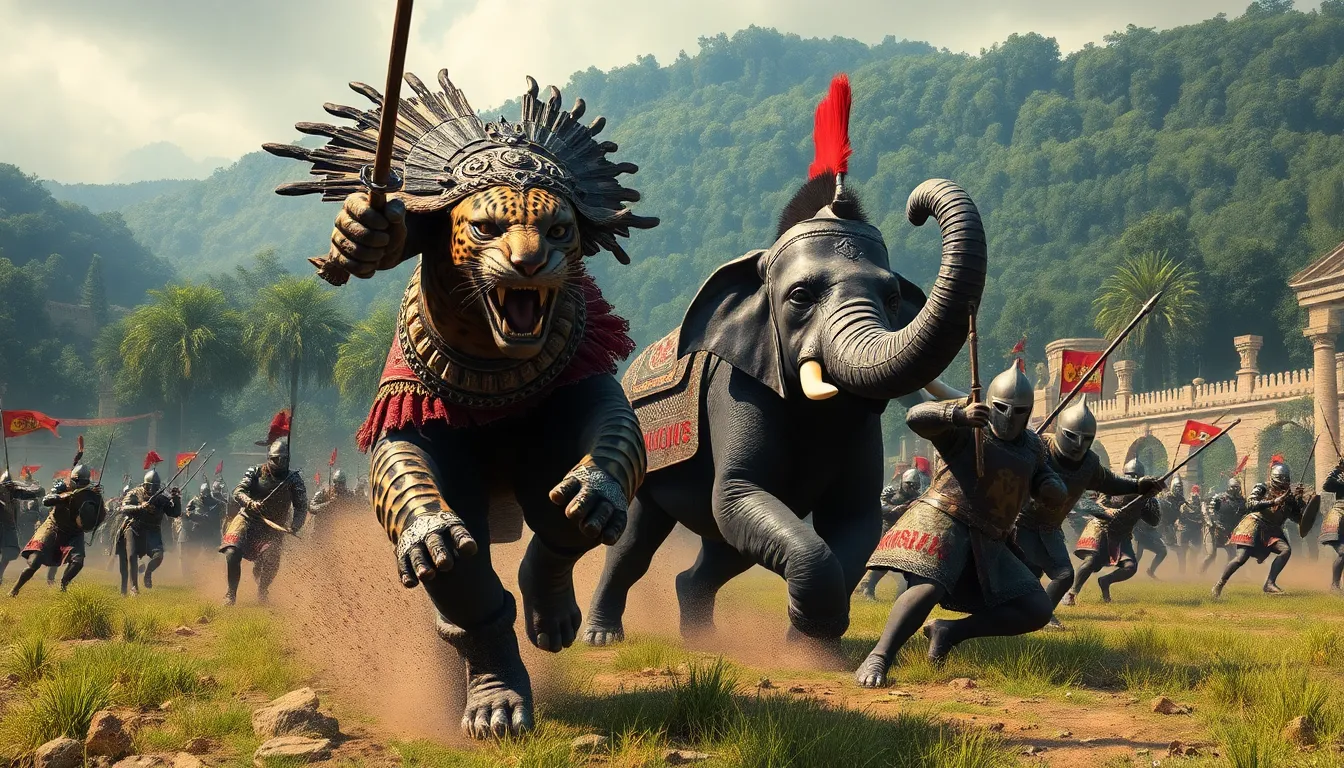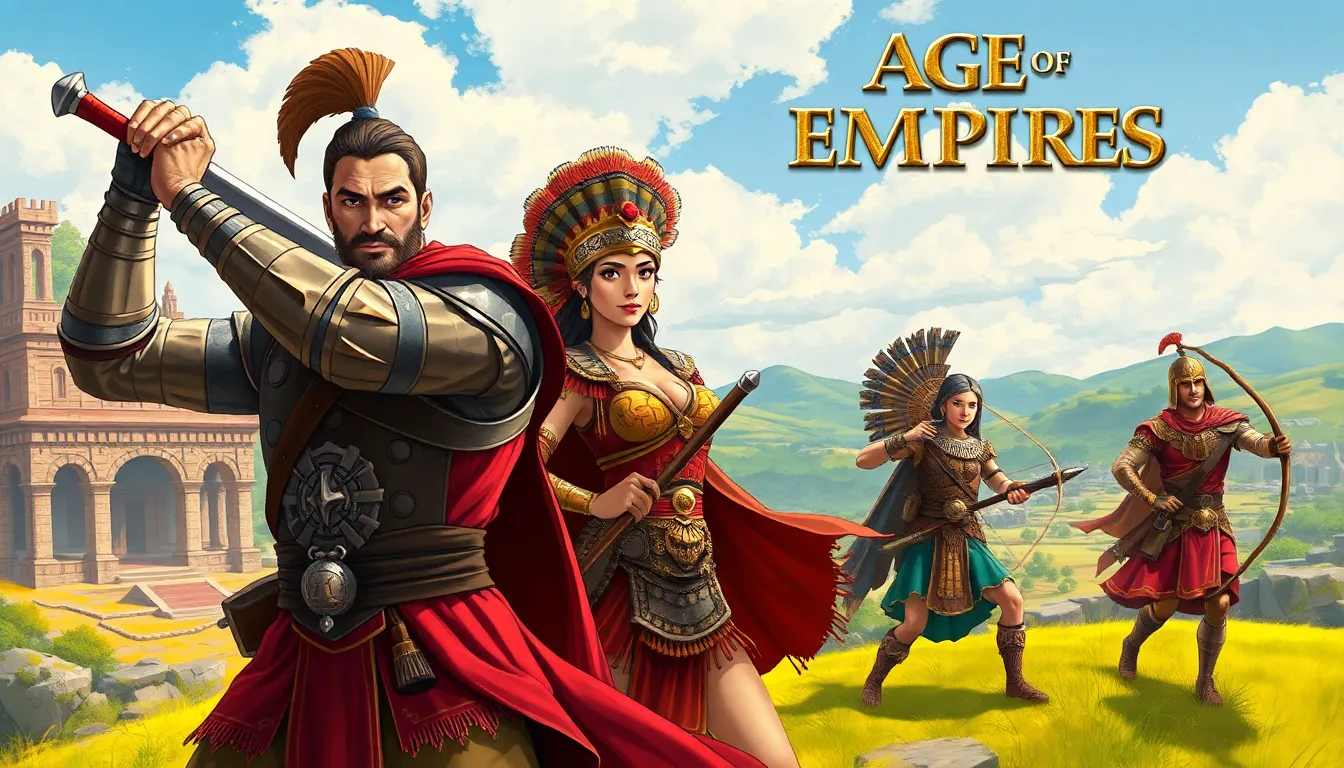In the vast landscape of Age of Empires, civilizations are the spice of life—each one brings its own flavor to the battlefield. Whether players prefer the swift strikes of the Mongols or the sturdy defense of the Byzantines, understanding these unique factions can mean the difference between glorious victory and a spectacular defeat.
This guide dives deep into the intricacies of each civilization, uncovering their strengths, weaknesses, and quirks. It’s like a treasure map for conquering empires, minus the pirates and buried gold. So grab your sword and shield, and let’s embark on this epic journey to master the art of civilization warfare. After all, why settle for being just another peasant when you can be a legendary ruler?
Table of Contents
ToggleOverview of AoE Civilizations
Age of Empires civilizations include a variety of historical factions, each bringing unique characteristics to gameplay. Players can select from choices like the Mongols, known for their cavalry, and the Byzantines, who excel in defense. Each civilization contains distinct units, technologies, and bonuses that shape their strategies and tactics during battles.
Unique strengths define these factions. The Aztecs feature strong infantry units, bolstered by a robust economy. On the other hand, the Franks possess powerful knights and exceptional farming capabilities. Understanding these attributes aids players in selecting the right civilization for their preferred playstyle.
Weaknesses also play a role in gameplay dynamics. The Vikings, despite their strong naval capabilities, struggle with late-game technology. Meanwhile, the Chinese start with a weaker economy, making early aggression vital. Familiarity with these shortcomings helps players craft intelligent strategies.
Civilizations also reflect their historical significance. The Japanese, with powerful infantry and navy, represent a maritime-seeking culture. Conversely, the Persians embody versatility with both strong economy and military might. Each faction’s lore adds depth, making strategic choices more engaging.
Mastering AoE civilizations involves analyzing unit strengths, economic bonuses, and historical context. Players who embrace learning these elements enhance their tactical decisions and overall experience. With proper understanding, they can transform from basic participants into esteemed rulers in the game.
Major Civilizations in AoE

Age of Empires features a rich variety of civilizations, each with distinct traits and units that influence gameplay. Understanding these elements shapes players’ strategies and enhances their gaming experience.
Civilization Traits
Civilization traits define a faction’s strengths and weaknesses. The Aztecs, for instance, benefit from stronger infantry and an enhanced economy. This advantage helps them dominate in early battles. In contrast, the Chinese face initial economic challenges, making their start tough. Each civilization also emphasizes unique aspects, like the Vikings’ naval prowess or the Byzantines’ strong defensive capabilities. Players must consider these traits for effective strategy development.
Unique Units
Unique units set civilizations apart, offering specialized advantages. The Franks’ devastating knights can outmatch many infantry types. Aztecs boast the Jaguar Warrior, known for its effectiveness in melee combat. Their strengths on the battlefield can dictate the flow of engagements. The Persians introduce the War Elephant, capable of absorbing damage while dealing significant harm. Each unique unit serves as a tactical tool, allowing players to leverage their civilization’s strengths.
Strategies for Different Civilizations
Players can enhance their gameplay by employing tailored strategies for distinct civilizations. Each faction requires unique approaches in both the early and late game phases.
Early Game Strategies
Prioritize economy by effectively gathering resources. Utilize specific civilization bonuses to boost early-game productivity. For example, Aztecs benefit from faster farming, allowing for rapid unit production. Employ scouts to gather information on opponents while keeping a safe distance. Moving quickly to secure critical resources, especially gold and food, gives a strategic advantage. Establish a strong foothold by creating military units early, focusing on infantry or cavalry based on the civilization’s strengths. Positioning armies wisely at choke points can deter enemy advancement.
Late Game Strategies
Transitioning to the late game requires careful planning and unit composition. Investing in advanced technologies is crucial, with civilizations like the Persians benefiting from powerful War Elephants. Prioritize upgrades that enhance existing army strengths while countering enemy unit types. Utilize unique technology trees, like those of the Byzantines, to formulate strong defenses. Securing strategic locations on the map enables resource control that supports a sustained military presence. Encourage cooperation in multiplayer settings by coordinating efforts with allies. Effective use of siege units can breach enemy fortifications, turning the tide of battle.
Tips for Mastering Civilization Gameplay
Understanding the strengths and weaknesses of each civilization enhances gameplay strategies. The unique bonuses of civilizations like the Aztecs enable faster resource gathering, crucial for early-game dominance. Emphasizing unit composition is vital; mixing infantry with cavalry can create a balanced army.
Utilize civilization traits to your advantage. For instance, leveraging the Franks’ powerful knights can lead to early aggression against opponents. Different approaches are required in the late game; focusing on advanced technologies can shift the tide in a match.
Securing important locations on the map can provide resources and strategic advantages. Each civilization excels in specific areas, so adapting strategies to match these strengths optimizes performance. Communication with allies in multiplayer games enhances collaborative strategies, making alliances more effective.
Timing matters significantly in gameplay. Rushing opponents during their early economy can create opportunities for victory. Transitioning from offense to defense is another critical aspect; maintaining a strong defense ensures long-term survival.
Taking advantage of unique units can change battle dynamics. The Aztecs’ Jaguar Warriors serve as an excellent counter to archers, showcasing how specific units disrupt enemy strategies. Observing opponents’ gameplay patterns aids in predicting their moves, allowing players to counter effectively.
Practicing various strategies enhances overall understanding. Regularly revisiting tactics with different civilizations builds versatility. Ultimately, experiencing all phases of gameplay fosters mastery over the rich tapestry of Age of Empires civilizations.
Mastering the civilizations in Age of Empires is crucial for any aspiring strategist. Each faction brings unique traits that can significantly impact gameplay. By understanding these strengths and weaknesses players can develop intelligent strategies tailored to their chosen civilization.
The journey from novice to expert requires practice and adaptability. Players should focus on resource management and strategic positioning while honing their skills in unit composition. Collaboration with allies in multiplayer scenarios can further enhance their tactical approach.
Ultimately the path to becoming a legendary ruler lies in the mastery of civilization warfare. With dedication and insight players can elevate their game and leave a lasting legacy in the Age of Empires universe.




